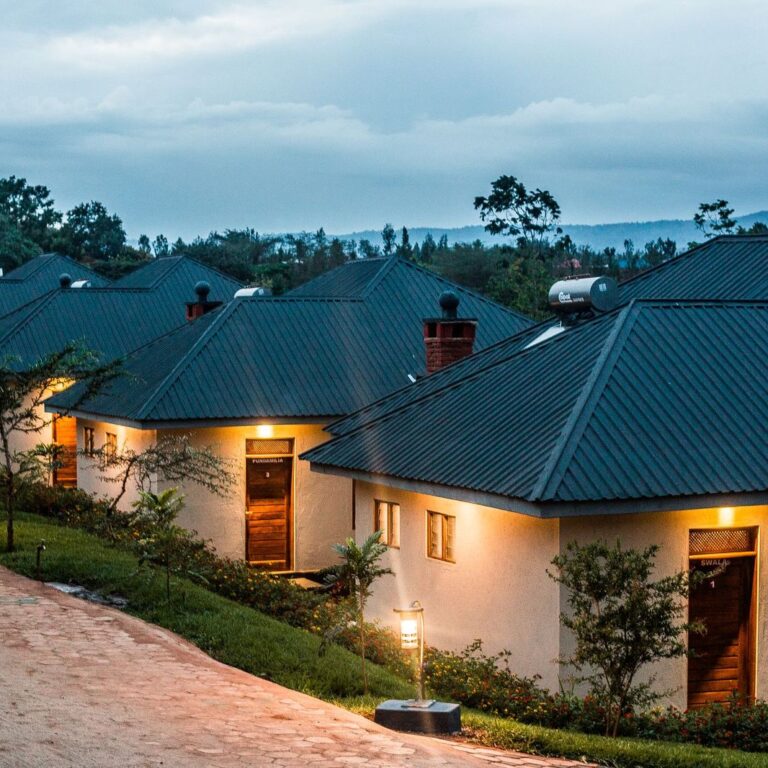How To Plan a Serengeti Safari.
Embarking on a Serengeti Safari is a dream for many adventurers seeking an unparalleled wildlife experience. At the heart of East Africa, the Serengeti boasts breathtaking landscapes and diverse ecosystems teeming with iconic African wildlife. Planning such an adventure requires meticulous attention to detail to ensure a seamless and unforgettable journey. In this comprehensive guide, we unveil the steps to crafting the perfect Serengeti Safari experience.
- Match your Serengeti Travel plans with the events you’re interested in, like the Wildebeest Migration or the calving season. To ensure a spot at popular animal viewing locations, reserve your Serengeti Safari Packages well in advance. For first-time safari-goers, consider a balanced itinerary.
1. Understanding the Serengeti
Before delving into the logistics of planning your safari, it’s crucial to grasp the essence of the Serengeti. Spanning approximately 30,000 square kilometers, this UNESCO World Heritage Site encompasses vast plains, acacia-studded savannas. And riverine forests, serving as the backdrop for the world-renowned Great Migration. Home to an array of wildlife, including the Big Five – lions, elephants, buffaloes, leopards, and rhinoceroses – the Serengeti promises unparalleled encounters with nature at its most raw and captivating.
2. Selecting the Ideal Time for Your Safari
Timing is paramount when planning a Serengeti Safari, as the seasons dictate wildlife movements and the overall experience. The dry season, from June to October, is regarded as the optimal time for game viewing, as animals congregate around water sources. Making sightings more frequent and dramatic. Alternatively, the wet season, from November to May. Offers lush landscapes, newborn wildlife, and fewer crowds, making it an appealing choice for those seeking a more intimate safari experience.
3. Choosing Accommodations
The Serengeti caters to a diverse range of travelers, offering accommodations to suit every preference and budget. From luxurious tented camps to rustic lodges nestled within the wilderness, there’s an option to satisfy every discerning adventurer. When selecting accommodations, consider factors such as location, amenities, and proximity to key wildlife areas to ensure a comfortable and immersive experience.
4. Crafting Your Itinerary
A well-crafted itinerary is essential for maximizing your time in the Serengeti and optimizing wildlife sightings. Work closely with experienced tour operators or safari guides to design a tailored itinerary that aligns with your interests, whether it’s witnessing the Great Migration. Embarking on guided walking safaris, or experiencing cultural interactions with local communities. Be sure to include a mix of game drives, bush walks, and leisure time to fully immerse yourself in the Serengeti’s unparalleled beauty.
5. Packing Essentials
Packing the right gear and essentials is crucial for a successful Serengeti Safari. Essentials include lightweight and breathable clothing in neutral colors. Sturdy hiking boots, a wide-brimmed hat, sunscreen, insect repellent, and binoculars for wildlife viewing. Additionally, don’t forget to pack a camera with extra batteries and memory cards to capture unforgettable moments during your safari adventure.
6. Understanding Wildlife Etiquette
Respecting wildlife and adhering to ethical guidelines are paramount when exploring the Serengeti. Maintain a safe distance from wildlife, refrain from feeding or approaching animals. And always follow the instructions of your guide to ensure both your safety and the well-being of the animals. Remember that you are a guest in their natural habitat, and your actions can have a profound impact on their behavior and ecosystem.
When is the best time to visit the Serengeti?
The best time to visit the Serengeti depends on your preferences and what you hope to experience. Generally, the dry season, from June to October. Offers excellent game viewing opportunities due to the concentration of wildlife around water sources. However, the wet season, from November to May, has its advantages, such as lush landscapes, fewer crowds. And the chance to witness the Great Migration calving season. Ultimately, it’s essential to consider your priorities and consult with a knowledgeable safari planner to determine the optimal time for your visit.
What wildlife can I expect to see in the Serengeti?
The Serengeti is renowned for its abundant and diverse wildlife. Including the iconic Big Five – lions, elephants, buffaloes, leopards, and rhinoceroses. Additionally, the Serengeti is home to a multitude of other species. Such as giraffes, zebras, wildebeests, cheetahs, hyenas, and various antelope species. Bird enthusiasts will also delight in the vast array of avian species that inhabit the region, making it a paradise for wildlife enthusiasts of all kinds.
What types of accommodations are available in the Serengeti?
The Serengeti offers a wide range of accommodations to suit every traveler’s preferences and budget. Options include luxurious tented camps, intimate lodges, mobile campsites, and budget-friendly campsites. Each accommodation type offers a unique experience, from sleeping under the stars in a traditional safari tent to enjoying five-star amenities in a luxury lodge. When choosing accommodations, consider factors such as location. Amenities, and proximity to wildlife viewing areas to ensure a comfortable and memorable stay.
What activities can I participate in during my Serengeti Safari?
Safari-goers can partake in a variety of activities to enhance their Serengeti experience. Traditional game drives are the most popular way to explore the park and observe wildlife in their natural habitat. Additionally, guided walking safaris provide a unique opportunity to experience the Serengeti up close and learn about its flora and fauna from experienced guides. Hot air balloon safaris offer a bird’s-eye view of the Serengeti’s stunning landscapes and wildlife. While cultural visits to local Maasai villages provide insights into traditional African lifestyles.
What should I pack for my Serengeti Safari?
Packing the right gear and essentials is essential for a successful and comfortable safari experience. Be sure to pack lightweight and breathable clothing in neutral colors. Sturdy hiking boots, a wide-brimmed hat, sunscreen, insect repellent, and binoculars for wildlife viewing. Additionally, don’t forget to bring a camera with extra batteries and memory cards to capture unforgettable moments during your safari adventure. It’s also advisable to pack any necessary medications. Toiletries, and personal items, as access to certain items may be limited in remote safari areas.
Is it safe to visit the Serengeti?
Yes, the Serengeti is generally considered safe for visitors, provided that proper precautions are taken and safety guidelines are followed. It’s essential to travel with a reputable tour operator or safari guide who is knowledgeable about the area and experienced in ensuring the safety of guests. Additionally, it’s crucial to adhere to wildlife etiquette. Respect the natural environment to minimize risks and ensure a safe and enjoyable safari experience.
How can I book a Serengeti Safari?
Booking a Serengeti Safari is easy and convenient. Thanks to the availability of numerous tour operators and travel agencies specializing in East African safaris. Start by researching reputable safari companies online and reading reviews from previous travelers to ensure quality and reliability. Once you’ve chosen a safari operator. Reach out to them directly or book through their website to inquire about available safari packages, itineraries, and pricing. Be sure to communicate your preferences and any special requests to tailor your safari experience to your liking.
What are Ultimate Guide to Booking a Serengeti Safari?
The Ultimate Guide to Booking a Serengeti Safari offers comprehensive insights on planning a dream adventure trip, vacation packages. Discover the best time to visit, top wildlife sightings, accommodation options, safari activities, packing tips, safety guidelines, and booking procedures in this concise, expertly crafted guide.
What are A Starter Guide to Planning A Serengeti Safari?
How to plan a trip to Serengeti National Park? Embark on a thrilling adventure with our Starter Guide to Planning a Serengeti Safari. Discover key tips for timing your visit, selecting accommodations, crafting the perfect itinerary, and packing essentials for an unforgettable wildlife experience in one of Africa’s most iconic destinations. How do I get to the Serengeti? By Car — Most visitors traveling by road enter the Serengeti through Naabi Hill Gate, which lies in the southeastern part of the park. Most Serengeti safaris start in the town of Arusha. From here it takes around 8 hours to drive to the Serengeti National Park.
When you plan a safari to Serengeti, you need to?
- Research safari operators based on your chosen safari type and budget.
- Shortlist a few that align with your preferences.
- Create a comparison chart to evaluate the offerings of each shortlisted operator, including prices, itineraries, and inclusions.
- Know how to get there. Usually, you fly into Kilimanjaro International Airport and then take a connecting flight to one of the airstrips near the park.
- Decide on your accommodation. Serengeti accommodation ranges from luxury lodges to basic campsites.
- Pack the right gear, including navigational tools, food, and water.
- Choose a responsible safari operator.
- Don’t rush and appreciate all the wildlife you see.
- Get to know your guide and don’t be afraid to ask questions.
- Wake up early and stay a night in a tent in the Serengeti.
Conclusion: Ultimate Guide to Planning a Serengeti Safari
Embarking on a Serengeti Safari is a once-in-a-lifetime opportunity to witness the wonders of the African wilderness up close. By understanding the nuances of planning, selecting the ideal time, choosing accommodations, crafting your itinerary. Packing essentials, and respecting wildlife etiquette, you can ensure a seamless and unforgettable safari experience that will leave you with cherished memories for years to come. You need a good 4×4 to travel inside of Serengeti, and you also need to be skilled at driving it, as the park’s roads are rutted and rough.







